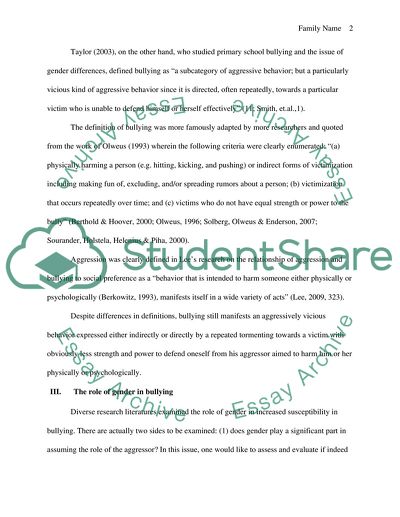Cite this document
(Bullying in Early Childhood Research Paper Example | Topics and Well Written Essays - 1750 words, n.d.)
Bullying in Early Childhood Research Paper Example | Topics and Well Written Essays - 1750 words. Retrieved from https://studentshare.org/sociology/1744952-bullying-in-early-childhood
Bullying in Early Childhood Research Paper Example | Topics and Well Written Essays - 1750 words. Retrieved from https://studentshare.org/sociology/1744952-bullying-in-early-childhood
(Bullying in Early Childhood Research Paper Example | Topics and Well Written Essays - 1750 Words)
Bullying in Early Childhood Research Paper Example | Topics and Well Written Essays - 1750 Words. https://studentshare.org/sociology/1744952-bullying-in-early-childhood.
Bullying in Early Childhood Research Paper Example | Topics and Well Written Essays - 1750 Words. https://studentshare.org/sociology/1744952-bullying-in-early-childhood.
“Bullying in Early Childhood Research Paper Example | Topics and Well Written Essays - 1750 Words”, n.d. https://studentshare.org/sociology/1744952-bullying-in-early-childhood.


